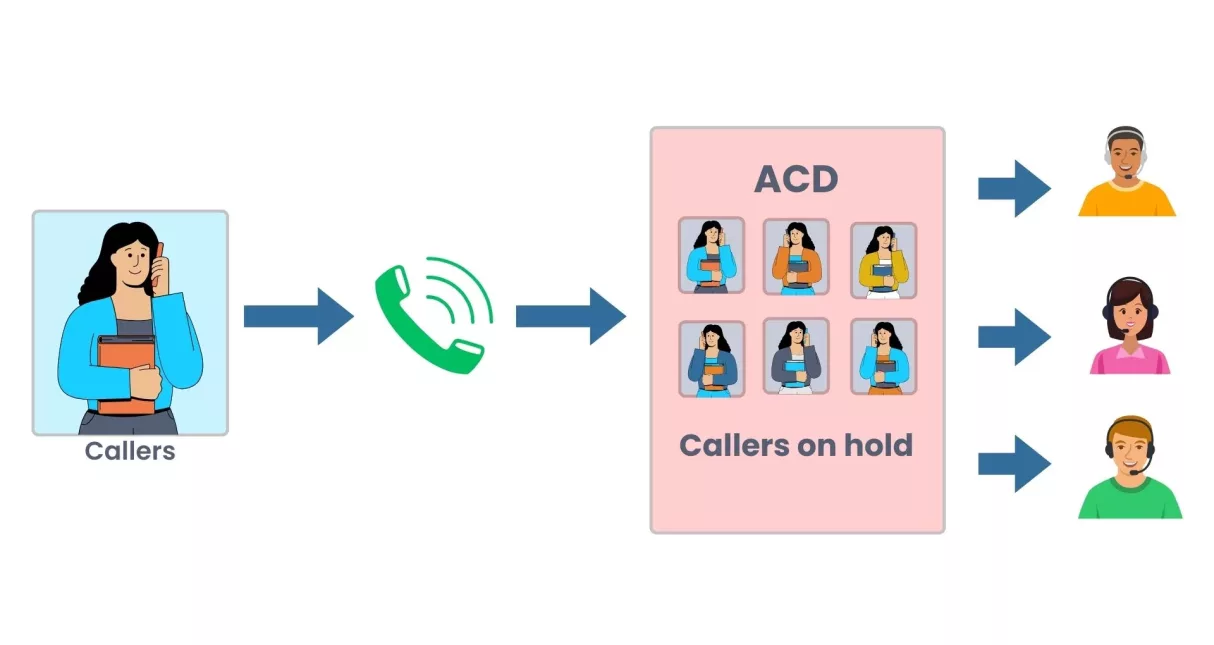Automatic call distribution (ACD) is an essential component of modern contact center solutions, enabling efficient and optimal management of incoming call flows. Designed to improve the customer experience while maximizing operational efficiency, ACD automatically assigns inbound calls to the agents best qualified to meet their needs. This technology relies on several distribution methods, each adapted to specific contexts. In this article, we’ll explore ACD in detail, how it differs from interactive voice response (IVR) systems, and the eight commonly used delivery types
1. ACD: What is it?
ACD, or automatic call distribution, is an inbound call management system that automatically directs calls to available agents. This system uses various algorithms to assign calls based on different criteria such as agent availability, specific skills, call priority, etc. The main objective of the ACD is to optimize response time and ensure a fair distribution of workload among agents, thus ensuring maximum customer satisfaction.
2. Differences between ACD and SVI
Although often confused, ACD and IVR are two distinct components of contact center solutions. The ACD is responsible for distributing calls to agents, while the IVR is an interactive system that guides callers through a voice menu to meet their needs or direct them to the right department or agent. While ACD focuses on call flow management, IVR provides an interactive interface for callers before they are routed to a specific agent.
3. The different types of call distribution
a) Fixed routing
Fixed routing involves assigning inbound calls to specific agents in a predetermined manner. For example, calls can be directed to a specific agent based on the number the caller dials or the service requested. This type of distribution is effective when callers have specific needs and require specialized assistance from the start of the call.
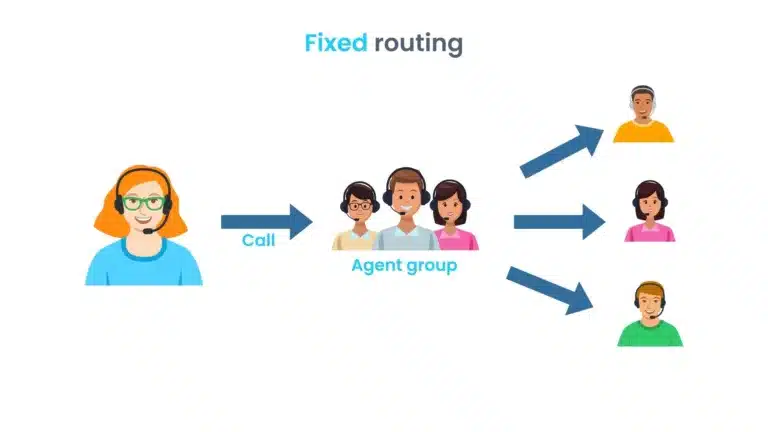
b) Round robin routing
Round-robin routing distributes calls sequentially to available agents in the order they were received. Each new call is assigned to the agent who has been available the longest, ensuring a fair distribution of the workload. This type of distribution is suitable for contact centers where priority is given to managing queues in a fair manner.
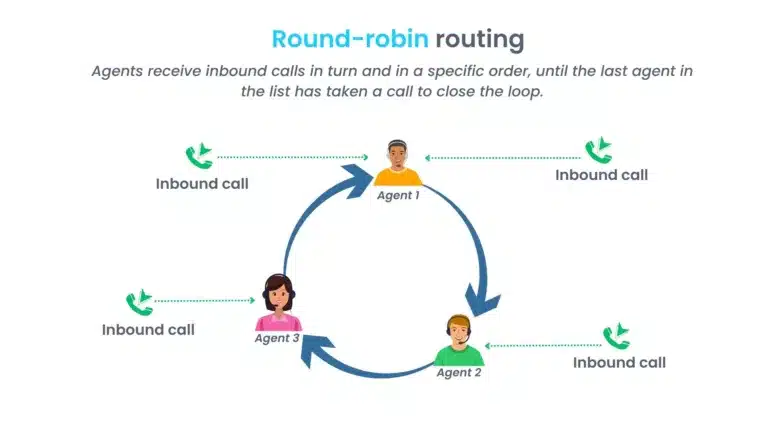
c) Routing to the least active agent
This method directs calls to the agent who has the fewest calls in progress or who has been idle for a specified period of time. This ensures efficient use of resources by maximizing the productivity of less busy agents. Routing to the least active agent is ideal for contact centers where workloads vary widely.
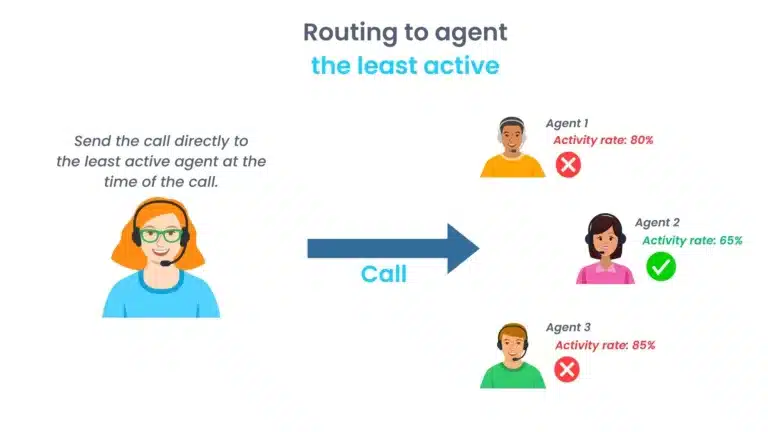
d) Routing based on timetable
Schedule-based routing directs calls based on agent availability according to their pre-established schedule. For example, calls can be directed to available agents during peak hours or outside of regular business hours. This type of distribution guarantees a balanced distribution of the workload throughout the day
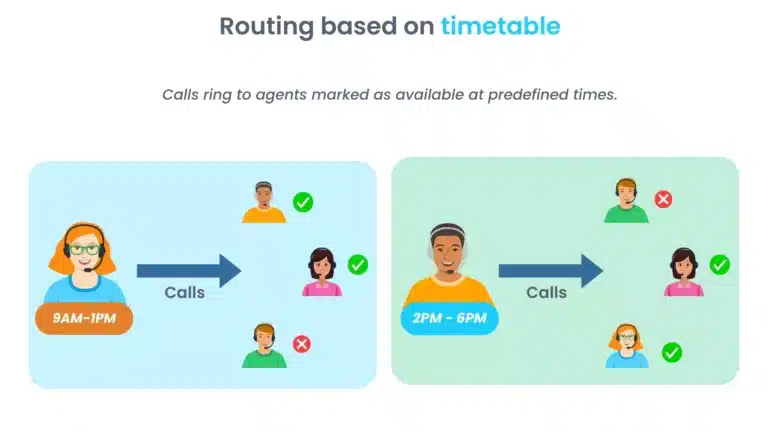
e) Simultaneous distribution
Concurrent distribution sends a call to multiple agents simultaneously until one of them accepts the call. This helps reduce wait times for callers and optimizes overall response time. Simultaneous distribution is particularly effective for short calls where a quick response is crucial.
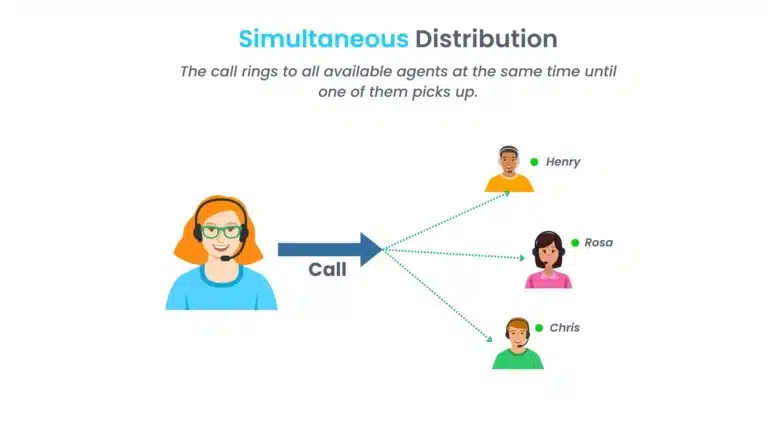
f) Weighted routing
This method assigns calls based on a pre-established weighting for each agent, based on criteria such as skills, experience or past performance. Calls are routed to agents with the highest weighted score, ensuring optimal allocation based on each agent’s capabilities.
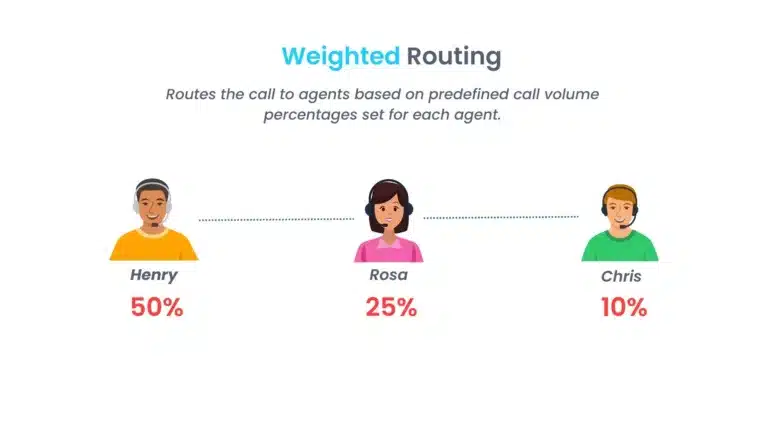
g) Value-based routing
Value-based routing assigns calls based on the value assigned to each call based on predefined criteria such as customer status, problem type, or sales potential. Calls are directed to agents best equipped to handle high-value situations, maximizing sales opportunities and customer satisfaction.
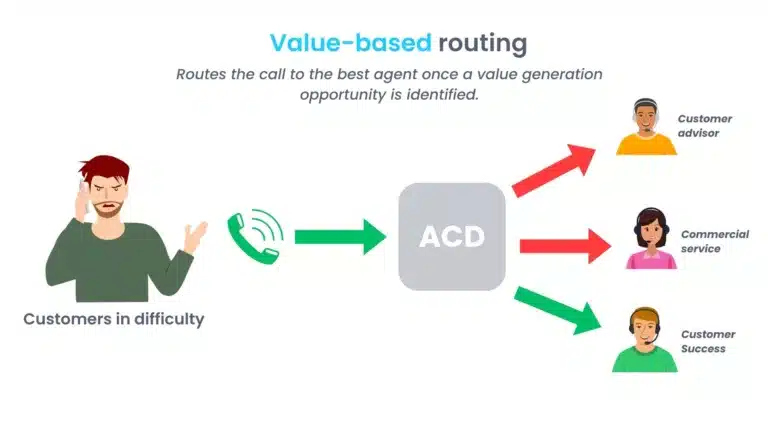
h) Data-driven routing
This method uses real-time data about callers, such as interaction history, account information or preferences, to direct calls to the agents best suited to their specific needs. Data-driven routing provides increased personalization of the customer experience and faster problem resolution.
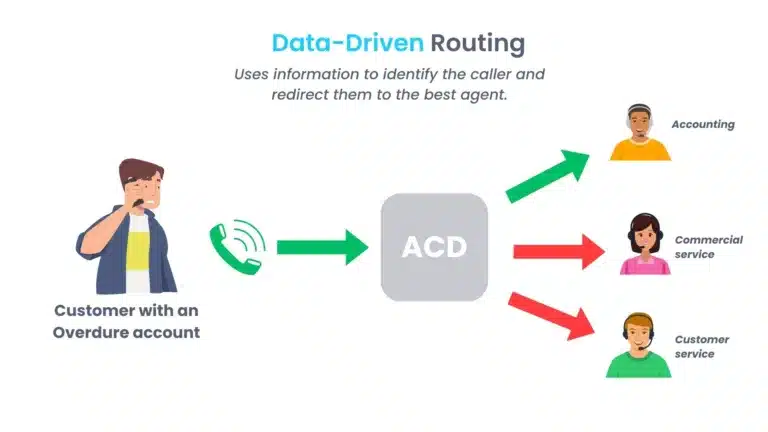
4. Conclusion
In conclusion, automatic call distribution (ACD) is a crucial element of contact centers, allowing the most efficient management of inbound call flows. By using a variety of distribution methods, contact centers can ensure an excellent customer experience while maximizing operational efficiency. At Nixxis, this is what we achieve every day by equipping and supporting our clients in their calling strategies. Our Contact Suite solution also makes it possible to distribute the call according to the skills of the agents for inbound and outbound calls. This way, you guarantee your customers receive the most appropriate response possible.
That's not all !
Discover the other features of our software

